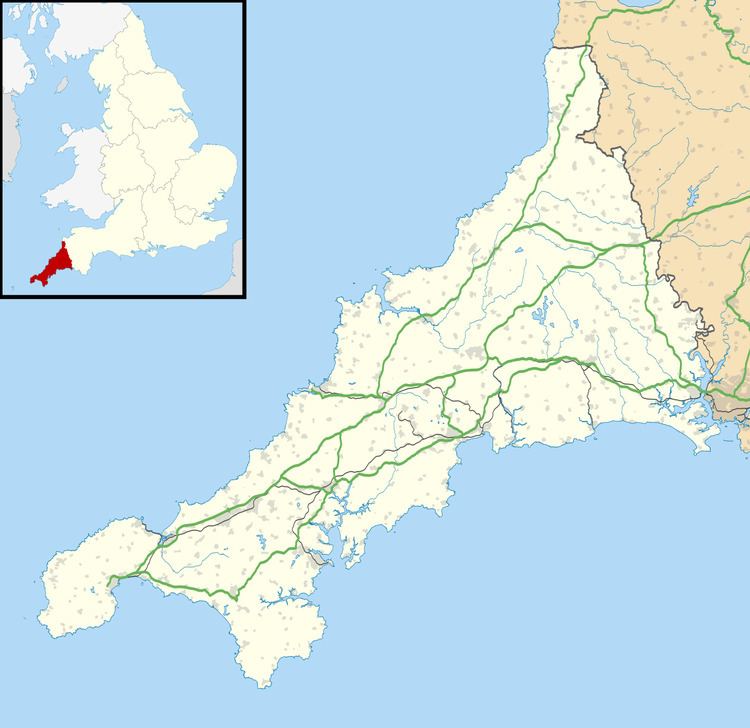OS grid reference SX272866 Dialling code 01566 | Civil parish Egloskerry Local time Tuesday 8:39 PM | |
 | ||
Population 549 (Civil Parish, 2011) Weather 9°C, Wind S at 14 km/h, 96% Humidity | ||
Egloskerry (Cornish: Egloskeri) is a village and civil parish in east Cornwall, England, United Kingdom. It is situated approximately five miles (8 km) northwest of Launceston.
Contents
- Map of Egloskerry Launceston UK
- Population
- History of Egloskerry and Penheale
- North Cornwall Railway
- Legal precedent
- References
Map of Egloskerry, Launceston, UK
Egloskerry parish consists of the village itself and many outlying hamlets and farms, including Tregeare, Badharlick and Trebeath. There are 3,253 acres (13.16 km2) of land and 9 acres (36,000 m2) of water in the parish.
Population
During the earliest census of 1801, the parish had 307 inhabitants. The population increased to a peak in 1841, when 552 people were recorded in the parish. Thereafter, the population steadily decreased to its lowest point of only 275 people in 1981. Since then, there has been a consistent increase in people living in the parish, with 374 persons residing there in 2001.
History of Egloskerry and Penheale
In the village is the 15th century church of St. Keri and St. Petroc with original Norman wall and transept. The name comes directly from the Celtic Cornish language Eglos meaning church (the equivalent in modern Welsh being Eglwys).
The Penheale Estate is located within the parish and Penheale was mentioned as one of 284 manors in Cornwall by the Domesday Book of 1086. The Rev. Henry Addington Simcoe, son of John Graves Simcoe, purchased the estate in 1830 and was curate of Egloskerry from 1822 to 1846. He was married twice and had eleven children. Simcoe wrote and published many books from his own printing press at Penheale. He died at the manor house on 15 November 1868 and was buried in the village churchyard five days later.
The manor house of Penheale, a mile from the village, is early 17th century though on the site of a mediaeval house. During the 1920s, Norman Colville acquired Penheale and made extensive renovations and additions through the assistance of the famous English architect, Sir Edwin Lutyens. The original house can be dated to ca. 1620-1640, part of the gatehouse late 18th century: Lutyens's extension is to the south.
North Cornwall Railway
Egloskerry railway station opened on 3 October 1892 when the London & South Western Railway, or LSWR, opened a line between Launceston and Tresmeer. The small goods yard at the station closed on 9 May 1960 and the station completely a few years later. On 3 October 1966, the line that passed through Egloskerry closed entirely.
